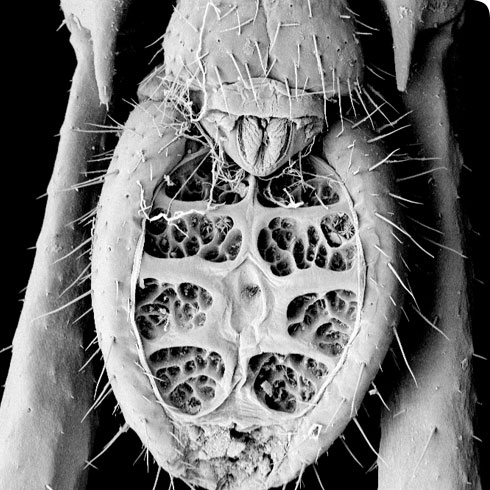Evolution
Craterostigmus is related to the diverse orders Scolopendromorpha (containing approximately 700 species) and Geophilomorpha (containing approximately 1,260 species) and has similar anatomical features and maternal brooding strategies.
However, it is excluded from a grouping of these two orders because Craterostigmus adds body segments after hatching from the egg - the other two orders complete segmentation in the embryo and are said to have strictly epimorphic development.
Centipede fossils show that the lineage now represented only by Craterostigmus separated from other living centipedes more than 300 million years ago.
The two species of Craterostigmus in New Zealand (C. crabilli) and Tasmania (C. tasmanianus) are each monophyletic in molecular analyses (Giribet et al, 2009) and their genetic structure is more consistent with a geologically ancient divergence than with more recent dispersal between Australia and New Zealand (Edgecombe ans Giribet, 2008).
Genetics
Molecular sequence data have been collected for two nuclear ribosomal genes and two mitochondrial genes from throughout the range of Craterostigmus crabilli (Edgecombe and Giribet, 2008; Giribet et al, 2009). Phylogenetic analyses of these data show that North Island and Stewart Island populations are separated from South Island populations by considerable evolutionary distance.
